The OnePlus 7 Pro Review: Outstanding Performance & Screen, Adequate Everything Else
by Andrei Frumusanu on June 19, 2019 12:00 PM EST- Posted in
- Mobile
- Smartphones
- OnePlus
- OnePlus 7 Pro
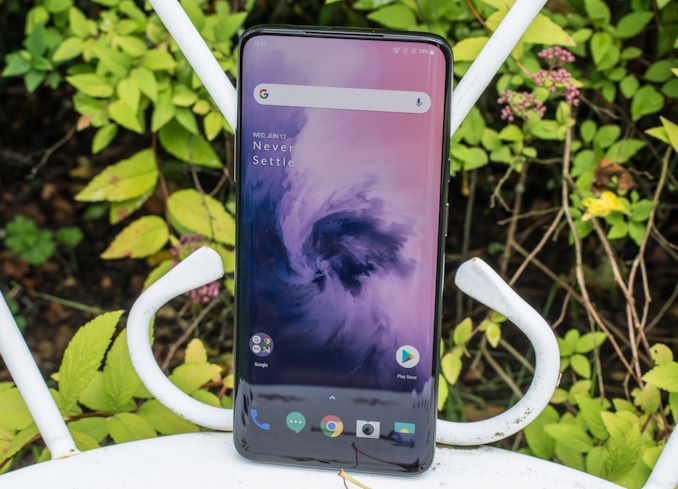
It’s been a month since OnePlus released their new flagship devices for 2019: The OnePlus 7 and OnePlus 7 Pro. The phone is one of the most awaited devices of the year and with the OnePlus 7 Pro, the company is promising to deliver a significantly better “ultra-high-end” device than ever before. Indeed over the last few years OnePlus has evolved from being a niche brand to actually being one of the most recognized smartphone vendors. With the increased popularity and product maturity, prices have also gone up, and the new OP7Pro carves itself into a higher tier device segment. Still, OnePlus’ product mantra remains unchanged and the new phone promises to deliver outstanding value for the price, being nick-named the “Flagship Killer”.
Today we review the OnePlus 7 Pro in depth, and investigate the device’s outstanding performance, the new unique 90Hz 1440p OLED display, and OnePlus’ take on a new triple-camera setup and implementation of a 48MP sensor. Naturally, we also have to talk about the phone’s new design – characterised by the new full-screen bezel-less display and pop-up front camera.
Let’s start with the fundamental specifications of the phone:
| OnePlus 7 Series | ||||||
| OnePlus 7 | OnePlus 7 Pro (Reviewed) |
|||||
| SoC | Qualcomm Snapdragon 855 1x Kryo 485 (Cortex-A76) @ 2.84GHz 3x Kryo 485 (Cortex-A76) @ 2.42GHz 4x Kryo 485 (Cortex-A55) @ 1.80GHz Adreno 640 @ 585MHz |
|||||
| DRAM | 6 / 8 GB LPDDR4X | 6 / 8 / 12 GB LPDDR4X | ||||
| Storage | 128 / 256GB UFS 3.0 | |||||
| Display | 6.41" AMOLED 2340 x 1080 (19.5:9) 60Hz |
6.67" AMOLED 3120 x 1440 (19.5:9) 90Hz |
||||
| Size | Height | 157.7 mm | 162.6 mm | |||
| Width | 74.4 mm | 75.9 mm | ||||
| Depth | 8.2 mm | 8.8 mm | ||||
| Weight | 182 grams | 206 grams | ||||
| Battery Capacity | 3700mAh 20W Charging (5V/4A) |
4000mAh Typical 3880mAh Rated 30W Charging (5V/6A) |
||||
| Wireless Charging | - | |||||
| Rear Cameras | ||||||
| Main | 48MP IMX586 0.8µm pixels (1.6µm 4:1 12MP binning) f/1.7 / f/1.6 (Pro) lens OIS |
|||||
| Telephoto | - | 13MP 1.0µm pixels (8MP 3x zoom photos) f/2.4 2.2x zoom OIS |
||||
| Wide | - | 16MP f/2.4 117° wide-angle |
||||
| Extra | 5MP 1.12µm f/2.4 Depth Sensor |
Laser-autofocus module | ||||
| Front Camera | 16MP 1.0µm IMX471 f/2.0 lens; fixed focus |
|||||
| I/O | USB-C 3.1 no headphone jack |
|||||
| Wireless (local) | 802.11ac Wave 2 Wi-Fi Bluetooth 5.0 LE + NFC Dual Band GPS (L1+L5), Dual Band Galileo (E1+E5a) |
|||||
| Cellular | UE Category 16 (DL) / Category 13 (UL) 1000 Mbit/s DL (5xCA 4x4 MIMO) 150 Mbit/s UL |
|||||
| Other Features | Dual Stereo Speakers | |||||
| Dual-SIM | Dual nanoSIM | |||||
| Colours | Mirror Gray Red (China & India) |
Mirror Gray (Glossy) Almond (Glossy) Nebula Blue (Etched/matte) |
||||
| Launch Price | 6 + 128: | £499 €575 |
6 + 128: | $669 £649 €749 ₹48,999 |
||
| 8 + 256: | £549 €639 |
8 + 256: | $699 £699 €805 ₹52,999 |
|||
| OnePlus 7 (non-Pro) Not available in US |
12 + 256: | $799 £799 €920 ₹57,999 |
||||
As is expected of a 2019 flagship, the new OP7Pro is fitted with Qualcomm’s newest Snapdragon 855 chipset, which by now should be no mystery to anyone as we’ve extensively covered the new 7nm SoC in our review of the Galaxy S10 a few months back. The new Cortex A76 derived CPU cores, the new Adreno 640 and the manufacturing process make the S855 the currently strongest Android SoC on the market.
Where OnePlus can differentiate itself is in the thermal design of the phone, and as we’ll see later in our sustained GPU performance tests, the 7 Pro fully delivers on its promises and the new heat-pipe and carbon thermal dissipation layers result in seemingly outstanding gaming performance.
The chipset is accompanied by varying amount of DRAM: OnePlus segments the capacity along with the NAND storage configuration options, starting at 6GB for the base modem, 8GB for the mid-tier, and also a 12GB ultra-high tier variant.
In terms of storage, OnePlus hit it out of the park this generation as the new 7 Pro is the first and currently only smartphone to ship with a new generation UFS 3.0 storage module. Compared to previous generation UFS 2.1 devices, this promises a doubling of the theoretical peak bandwidth, something that is noticeable especially when installing large applications.
Moving onto the design of the phone, the first thing you notice when you have the device in hand is that it’s a notably bigger phone than the OnePlus 6/6T. The 7 Pro is bigger in all dimensions; it’s wider, taller, thicker and heavier.
The back of the phone features a relatively similar design as the 6T: A centred vertical camera layout with a flash underneath it as well as the classical OnePlus logo. The back is still glass; the review unit pictured above is the “Mirror Gray” version which has an interesting holographic effect reflecting off of it. Personally I had found the chemically etched “Nebula Blue” variant a lot more interesting, if not for the colour, then because of the matte finish providing a much different feel to the phone and also not being nearly as big of a finger-print magnet as the glossy variants.
On the front of the phone we find the centre-piece and prime feature of the OnePlus 7 Pro: its bezel-less full-screen OLED display.
OnePlus isn’t the first vendor to come with such a bezel-less design to market, as we’ve seen implementations from Oppo, Honor and Xiaomi over the last ~8 months. How the OnePlus 7 Pro differs from the competition is that it offers the most refined solution to date, with the inarguably best display panel specifications in the market.
OnePlus relied on Samsung to source the screen, and it’s said that OnePlus spared no expenses this time around. The screen is a 6.67” diagonal unit at 1440p, with an exact resolution of 3120 x 1440, resulting in a wide 19.5:9 aspect ratio.
While that by itself isn’t very unusual, what is special about the phone is that this is the first 90Hz display with aforementioned specifications. The new high refresh rate display panel of the phone is very much the killer feature of the OnePlus 7 Pro, and it doesn’t disappoint. To top things off, the panel also checks all the boxes with support for HDR10+, various accurate display profiles, and promise of high brightness. The latter point is something we weren’t quite able to verify, something we’ll dwell deeper into during the display testing section.
Underneath the front screen and hidden from view is a new generation optical under-screen fingerprint sensor. The new unit is a lot faster than what we saw on the 6T as it’s very much faster than Samsung’s ultra-sonic fingerprint sensor in the S10.
OnePlus was able to achieve a bezel-less display design thanks to the phone’s new pop-up front camera module. The module itself is a 16MP IMX471 sensor with an f/2.0 lens and it takes adequately good pictures. The module is located in a “tray” that is mechanically actuated up and down by an internal motor and screw assembly. The module pops up quite fast and equally retracts at the same speed. OnePlus also implemented a fall-detection mechanism that automatically retracts the module when sensing that the phone is in free-fall, although it’s not quite fast enough to quite retract itself fully from a standing chest-height.
I have relatively mixed feelings about the design. On one hand I absolutely agree that the bezel-less screen is a definitely a winning factor of the phone, however there’s still large compromises in mechanical camera assemblies such as on the 7 Pro.
For one I found that the module more than once had retracted with some dust or debris. This didn’t result in any scratches, but I do have to wonder how the internals will look like after a year or more of usage. Also I think that this mechanism had a quite big cost in terms of actual internal space of the phone. It takes up a significant amount of volume inside the phone, plus it adds in quite a lot of weight to the phone. OnePlus 7 Pro not only is a big phone, but at 206g it’s also quite heavier than most other devices. In fact the phone that is most comparable to it in my opinion is the iPhone XS Max, which is also quite the massive unit.
The most odd and annoying thing about the pop-up camera however is the top cover of the module. Here the finish and colour just doesn’t match those of the rest of the aluminium frame of the phone. I immediately noticed this at the launch event and it seems it affects all phones in all colour variants.
Going back to the rear of the phone, another key feature of the OnePlus 7 Pro is its triple-camera setup. Like many other vendors this year, OnePlus has opted to go for Sony’s new IMX586 camera sensor for the main module. The sensor is characterised by its 48MP resolution and ability for 4:1 pixel binning into 12MP. The actual sensor’s colour filter is a quad-bayer setup, meaning the real chromatic spatial resolution is 12MP anyway, and the 48MP mode is enabled via pre-processing on the sensor itself, really only achieving chromatic spatial resolution equivalent to about ~27MP. OnePlus here does things better than a lot of other vendors; the 48MP simply isn’t available outside of the Pro mode, and I suggest users to just avoid using it at all.
OnePlus did strive to improve the optics of the new module. It comes with a f/1.6 aperture and features OIS, the latter which is quite crucial for video recording. The camera is augmented by a laser auto-focus module, as the sensor only makes use of limited phase-detect autofocus pixels.
While the new main sensor is new, the bigger addition to the camera experience of the 7 Pro is the inclusion of a wide-angle and dedicated telephoto module. The wide-angle is a 16MP unit with a 117° field of view and f/2.4 aperture optics, in line with what we’ve seen from other flagships.
The telephoto module features an effective 3x zoom (74mm equivalent focal length) at 8MP. It’s to be noted that OnePlus later clarified that the actual sensor is a 13MP unit and the optical zoom is only 2.2x, OnePlus crops this down to 8MP for an effective 3x relative to the main sensor. The full 13MP of the module are only used in portrait mode shots.
Finally, the OnePlus 7 Pro continues OnePlus’ track of not having a headphone jack. Unlike the 6T last year (And the OnePlus 7 this year), at least the 7 Pro makes use of the space by putting the SIM tray in its place at the bottom of the phone. However what’s puzzling is that OnePlus didn’t include a 3.5mm headphone dongle in the 7 Pro package. I find this relatively egregious given that consumers updating to the 7 Pro will have to purchase a unit separately. To top this off, OnePlus also doesn’t offer any bundled headphones with the phone.
The positive things in the audio department is that the speakers of the OP7Pro are significantly improved. OnePlus has significantly widened and increased the size of the earpiece grill, and the module now serves as a second speaker for stereo playback. While the audio is much improved over previous OP devices (which had terrible speakers), it doesn’t quite match the quality seen in the competition.
Overall design wise, I think the OP7Pro is a great phone with great ergonomics. I just have to remind readers that this is a big phone that is also quite heavy – so there will definitely be people who may be put off from the device due to its dimensions.


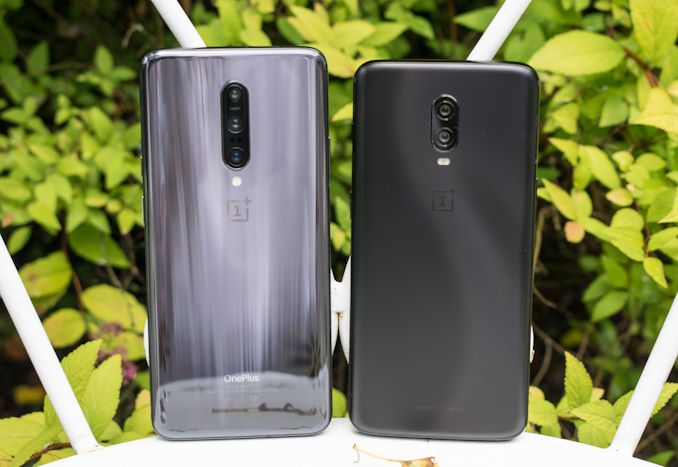
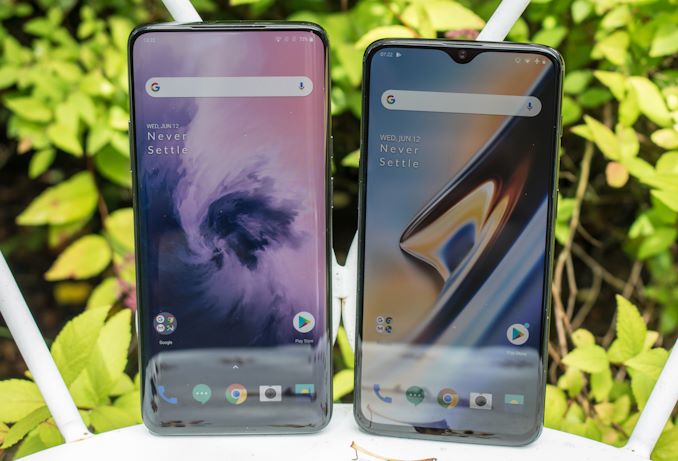

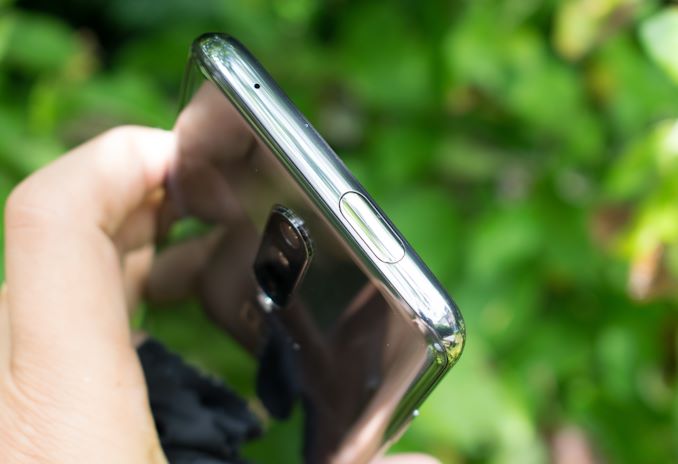

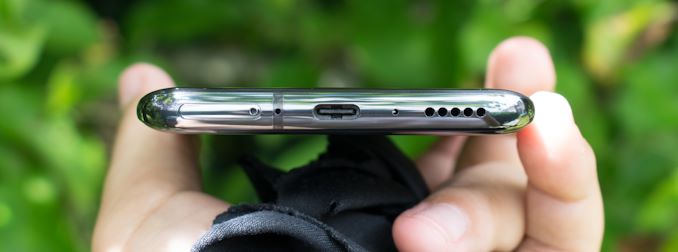








91 Comments
View All Comments
hadrons - Wednesday, June 19, 2019 - link
Currently great camera is a huge factor for premium phones and one plus has not been up to the big players for a long time, but still somehow people rate this phone better than a pixel phone. Every other Android manufacturers either lag behind or totally behind security or software updates and one plus is one among them. On a daily end user level scale, one plus is only as fast as the SOC and the Android version in it. Price is the only factor that I find some advantage in buying one plus.1_rick - Wednesday, June 19, 2019 - link
Not only that, but $670 for the base model (I'm only considering the Pro as you "can't get" the 7 in the US) is hardly a "flagship killer". That honor would more properly belong to something like the Xiaomi Mi Mix 3, at $470 on AliExpress.MrSpadge - Wednesday, June 19, 2019 - link
... or the Mi9, starting at 400€ in Germany (equivalent to ~400$ in the US).ilaicohen - Saturday, July 27, 2019 - link
Wth guys you can just download the Gcam and there you go, a better camera. And just saying, the camera isn't as bad as everyone says. Actually, it's pretty great. And about the price, it's half the price of the iPhone XS Max (with tax) so yea. It's a flagship killer. So cut off the bullshyt and go get yourself a OnePlus 7 Pro.badbanana - Tuesday, June 25, 2019 - link
i don't get this "..should have a better camera" thing. most users can't even tell what "f/2.0 lens" mean. for me, as long as it takes a clear photo, without the shakes then it's a "better" camera.i've owned every Samsung (for once never got any software updates) flagship since the S3 came out and found that OnePlus gets software updates whenever it's available.
systemBuilder - Friday, July 19, 2019 - link
I have a OnePlus 6T. The camera beats and iPhone 6S in dxomark. For me, that's "Good Enough". Freaking out over a compromise camera (cellphone cameras are ALWAYS compromise cameras) just shows that the reviewer has no perspective on life. I enjoy the on-screen fingerprint reader, the fantastic battery life, and the generous RAM & Flash Storage and the OLED screen, all at a great price.johansyren - Tuesday, November 10, 2020 - link
As someone who switched from a wireless charging phone to a OnePlus with insanely fast Dash charging, I genuinely prefer the later. I just don’t have to worry about charging my phone anymore. I’ve been on this phone for 1.5 years now and I’m still in awe every time I charge it because of it’s speed.
I read about it at https://casinovalley.ca/best-picks/best-gambling-p...
Most of the time I plug it in when I’m getting ready to head out and in 10 minutes it charges up to a point that I don’t need to worry about battery throughout the day. Wireless charging would be a nice bonus, but considering how slow it used to be comparatively, I’d still never actually use it.
Roy2002 - Wednesday, June 19, 2019 - link
It is a great phone, wish it has better cameras.XabanakFanatik - Wednesday, June 19, 2019 - link
No mention of the terrible stuttering when the phone is in 90Hz mode and you play a 60FPS video? OnePlus claims the display's refresh rate is adaptive to the content yet it cannot smoothly "adapt" to play a 60FPS video.By far the biggest complaint I have with the phone - If I want to watch a 60FPS video without terrible stutter, I have to go to the options and switch the display to 60Hz mode before, then switch it back to 90Hz mode after.
Xinn3r - Wednesday, June 19, 2019 - link
Now that's a deal breaker